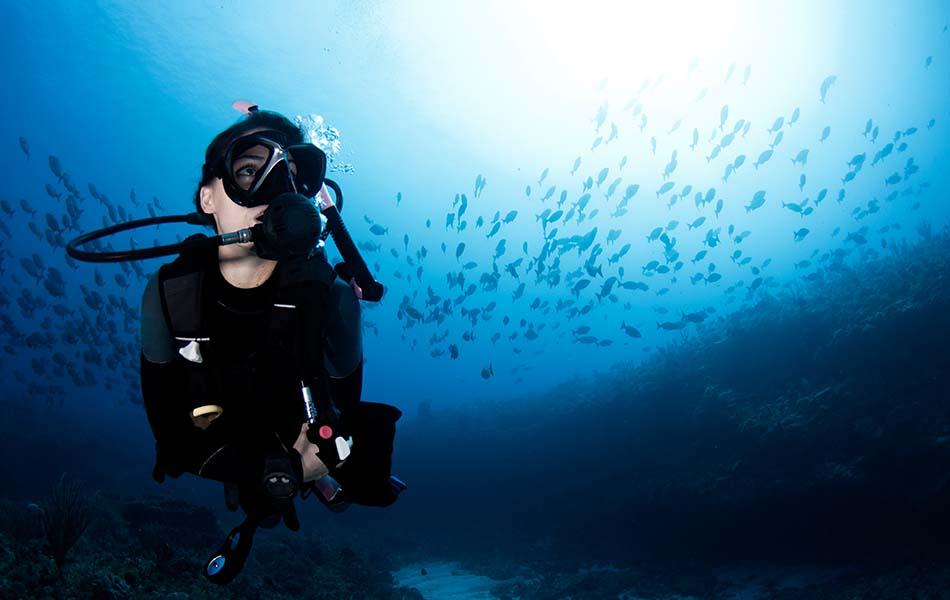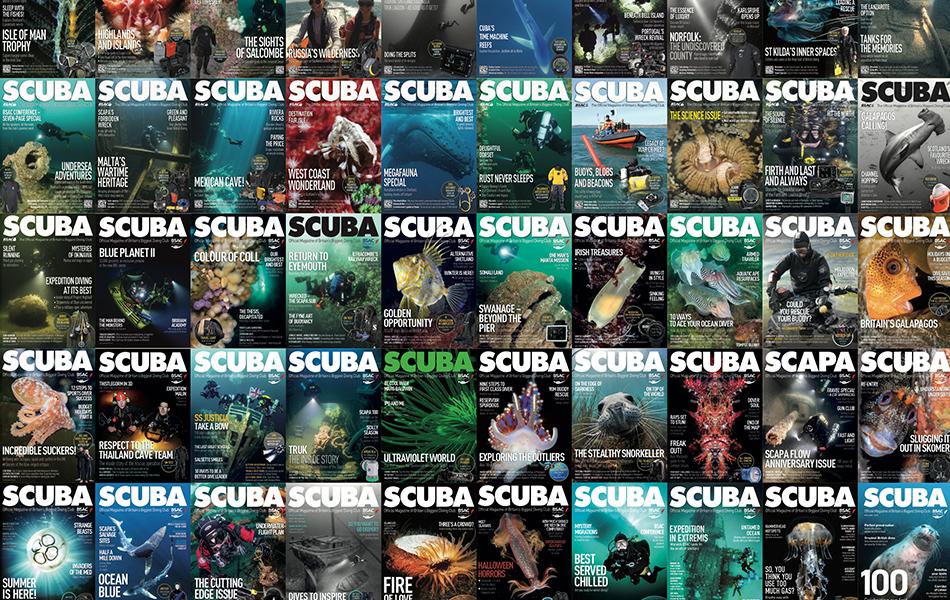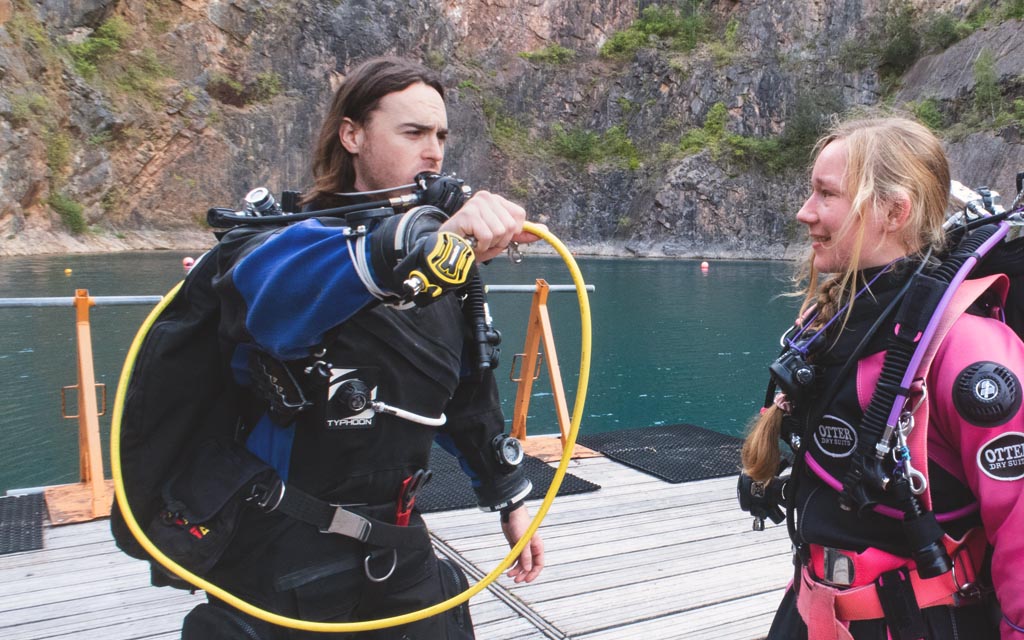
BSAC has devised a workshop for those who want to use primary donate as their go-to alternative supply technique.
The origins of breathing from a long primary hose and donating the same long hose as the alternative supply comes from diving in overhead environments. In a constricted space, where divers may not be able to dive side-by-side, this configuration ensures that a gas supply can be passed to a buddy in an emergency situation, and simplifies air sharing for a longer time until they can surface.
The use of primary donate via a long hose is now preferred by some for all types of diving, not just overhead environments. We are pleased to announce that the Primary Donate Workshop is now available from BSAC to cover training in this technique. This also complements the recently launched Advanced Wreck Course, which encompasses overhead environments.
In 2017, BSAC clarified its position on primary donate after a number of questions from members about whether they could dive using this technique for alternative supply. BSAC has always encouraged its members to choose kit to suit the kind of diving they are doing, but also to ensure they have sufficient training to be competent and confident with different equipment configurations. Divers have been able to use primary donate if they have been trained to use the technique, but at the time this training was only offered by other dive agencies, so BSAC started to develop a workshop for members.
We’ve identified Twin-set Instructors who’ve already had some primary donate training, and issued them the instructor qualification – which has given us about 20 people. Any other Twin-set Instructors who can demonstrate that they have had such training from another agency can contact BSAC and will be issued the instructor qualification, if appropriate. BSAC Twin-set Instructors completing the Primary Donate Workshop will be eligible to teach the workshop.
– Introduction by Technical Group Lead, Sophie Heptonstall
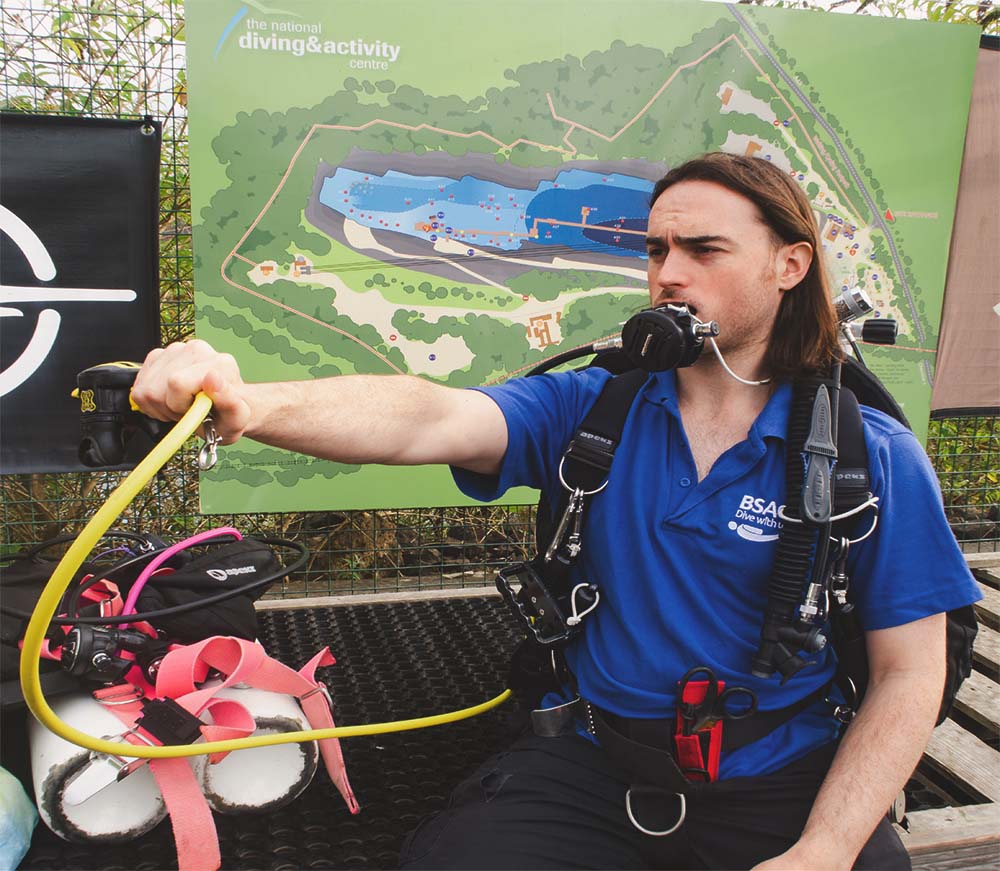
Jacob Broughton-Venner at the pilot workshop at NDAC
An instructor's perspective...
Jacob Broughton-Venner was an instructor on the pilot workshop, run at NDAC at the time of the Go Diving Roadshow.
Entire evenings and acres of forum space have been consumed by discussions on the pros and cons of primary donate (PD). When it comes down to it, I chose to adopt this system because I enjoy it, and it works for me. I’ve been diving primary donate for the past five years, having completed a course outside of BSAC, and was obviously very excited to hear rumours of a BSAC PD workshop in the making. Now it’s here!
The workshop is split up into five parts: a video demonstration; a dry practical on hose routing; dry runs on the skill of primary donating; a sheltered water lesson, and finally a discussion on discharging a Duty of Care when diving. It should take only half a day.
We decided to run the pilot workshop at NDAC (the National Diving and Watersports Centre, near Chepstow), in the hope of having space to train and some decent viz for my photography. Unfortunately, an overcast day and rebreather try dives (part of the Go Diving Roadshow) made for slightly worse than average visibility. Of course, we persevered.
It was a relaxing start to the day, enjoying a coffee in the café while watching the video demonstrations included in the workshop. Caffeine levels optimised, we moved onto optimising hose lengths, routing and stowage. Multiple configurations can work with primary donate, but we went for the traditional hog-looped stowage, in which the long hose loops down the right-hand side, then back up the front of the body and goes around the back of the head.
We kitted-up and took the bumpy bus ride down to the water’s edge so we could start practising the skills on the pontoon. This went a lot smoother than my own first experience of PD, primarily due to the student’s familiarity with the skill. This had been instilled earlier by the video demonstrations, which cover the basics and nuances of the skills. After plenty of progressive steps and repetition on land, we sought the peace and space of an unused platform for our underwater drills.
There are some risk assessments to be made with primary donate in a COVID-19 world, and the instructor manual makes this clear with suggestions on how to simulate the skill. Luckily, the student was my partner, Aithne Atkinson, and since we come from the same household, we chose to practise the full skillset. Again with progressive steps and repetition, the student had a chance to condition the response both as donor and recipient.
Finally, on the important point of Duty of Care, not all buddies will have seen this skill. Simply telling them you will dive in a primary donate configuration in the buddy check isn’t a sufficient way of deviating from a core skill. Instead, BSAC recommends you need to inform your buddy well before the dive, perform a dry run, and then repeat it at the surface. In any case, if a buddy isn’t comfortable with primary donate, a method that both divers are comfortable with should be implemented. To finish the day, I informed my student that I keep an alternative source retainer in my dry bag, which comes with me to all dive sites. This allows me to simply attach it onto my right D-ring and dive BSAC’s core secondary take method, with no need for changes to hose routing or stowage.
Our day was ultimately successful, with Aithne meeting and exceeding the required performance standards and becoming the first graduate of BSAC’s Primary Donate Workshop. From an instructor’s point of view, the day was made easy by an experienced student, a great venue, and a fantastic instructor manual. Clearly, a significant amount of work has gone into these course materials. They offer comprehensive advice in a clear format and are inclusive of all kit configurations. Thank you to all involved who have put together a first-rate course.
The student’s perspective, by Aithne Atkinson
We got off on a rocky start, with a discussion on hose colouring! Jacob suggested a yellow long hose would be more visible than my current black one. What he had failed to take into consideration was my perfectly coordinated pink kit. Honestly... yellow and pink? Joking aside, a brief chat on hose routing and some dry runs allowed us to get the basics out the way above water.
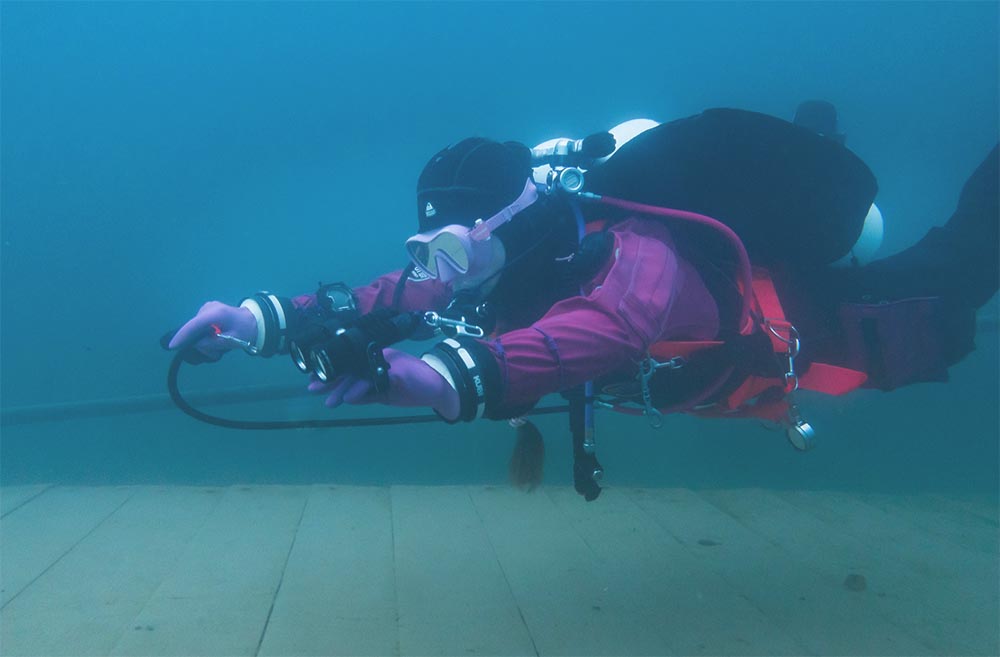
Aithne offers her primary reg, performing the skill with perfect buoyancy
It was refreshing to see the modernisation of BSAC teaching materials, with the incorporation of a smart looking video demonstration. The real meat of this course, however, is the in-water learning and repetition. For me, the most significant difference between primary donate versus secondary take is that this method requires immediate and effective action by the donor.
The skill itself is straightforward, but committing this action to muscle memory is key. By repeating the skill over and over (and over!), in multiple situations and with task-loading, it became second nature. I am excited to incorporate this skill into my recreational diving, in particular when diving with stages, as I feel primary donate will work best for me and my own kit set-up.
For more information on the Primary Donate Workshop, go to bsac.com/primarydonate.
Join the BSAC community
The BSAC network is working together to keep people connected to the sport. With online training, special interest webinars, competitions, support to clubs and the trade, and much more...we'd love you to join us.
This Learning Curve article was originally published in SCUBA magazine, Issue 121, December 2021. For more membership benefits, visit bsac.com/benefits.
Images in this online version may have been substituted from the original images in SCUBA magazine due to usage rights.




